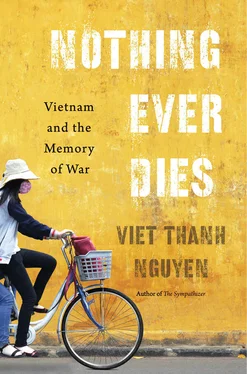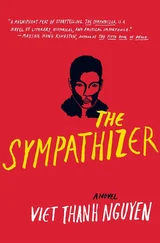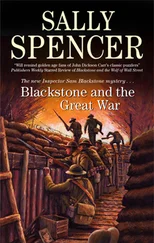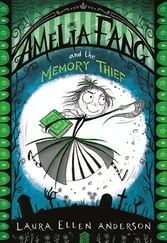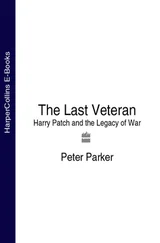Against these legacies of the Cold War and of hot racial relations, the Korean Wave rolled over Asia. Hallyu was the phenomenon of Korean soap operas and pop music that infiltrated Asian countries and Asian diasporas. Korean culture became the new cool, climaxing with the global video hit and dance craze of 2013, Gangnam Style . Youth all over Asia and Asian youth in America wore Korean fashion and Korean hair. Koreans themselves developed a reputation, fair or not, for reworking themselves with plastic surgery, a practice most visibly performed by the stars of Hallyu. Hallyu was the triumph of Korean soft power, enabled by Korea’s economic transformation. The rise of Korea impacted even me, for while I was usually mistaken for Japanese in Europe, in some parts of Asia I was mistaken for Korean, most ironically in my own homeland. Compared to my fellow countrymen, at least the ones who had never left, I was too tall and too pale and dressed in Western styles, my hair achieving Korean elevation. Even when I spoke Vietnamese, they routinely said, “Your Vietnamese is so good!” They assumed I was not one of them, which, perhaps, I am not.
In Seoul, no one ever mistook me for Korean. My impression was of a twenty-first — century city coated in a metallic sheen, the reverse of the frightening Pacific Rim metropolis of Blade Runner . The international facilities were superb, at least to someone who had agonized through the terminals in Saigon or Hanoi. The plush, air-conditioned limousine taxi that ferried me to my hotel had tinted windows, as did most of the slick cars that sped by. Seoul was clean, efficient, and intense in its display of light and smooth surfaces, its people’s designer clothing and handbags and eyeglasses. Traffic was orderly and citizens were courteous, at least to an outsider who did not speak the language. One need not worry about the water or the food or the air, and the threat of the north was like the threat of an earthquake in my California — everyone was blasé, except for the troops on the Demilitarized Zone, itself a must-see for tourists. I remembered how my first exposure to Korea was through M*A*S*H , the 1970s television series about wacky American military doctors in the Korean War, which my young refugee self did not recognize was also an allegory for America’s war in Vietnam. America wanted to save both countries but only convinced itself of success in the case of one.
Sixty years after the truce, thirty years after the television show, Korea now jostles with America for cash and coin even as it depends on America for military protection. This history of East and Southeast Asia tempts the counterfactual, presents the lurking possibility of alternative times and universes, of roads and choices not taken, of the different family I could have had and the different self I could have been. How many times have I heard Japanese and Korean businessmen and tourists say that Vietnam reminded them of their country thirty or forty years ago? They visit another country and go back in time to see what might have been: if only the war had not happened, if only the communists had not won, if only the country were still divided, at a stalemate. Isn’t division and stalemate what happened to Korea, and for its own good? Korea and Vietnam are both capitalist fables, but with opposing morals. Vietnam lost forty years and fell behind because of the wars against the French and the Americans, and for what? Now a reunified, independent, and communist Vietnam suffers from capitalist jet-lag, behind the times, striving to become China or (South) Korea or perhaps Taiwan or Hong Kong or Singapore, where an authoritarian government at least keeps the country clean and precise, unlike the case in authoritarian Vietnam. Of course my impressions of (South) Korea are faulty and tourist-thin. Turbulence, poverty, and uneven development roil beneath the cosmetic façade, but at least a façade exists. Vietnam has most of Korea’s problems but only a measure of its success, and even to cross the mad streets, one must take one’s life into one’s hands.
Anyone who remembers America’s forgotten war in Korea and Korea’s forgotten war in Vietnam must feel the possibility of the counterfactual, the point where the histories of Korea and Vietnam intersected and diverged. If (South) Korea had not gone adventuring in Vietnam, would it be the country it is today? If (South) Korea was not the country it is today, could it rewrite its past as it has? If (South) Korea were not a global powerhouse, would anyone care about its memories? The upshot is that (South) Korea’s success in waging a brutal and dehumanizing war in Vietnam helped it to become a capitalist and industrial stronghold that can do more than alter faces. The surgeons of history have been at work in Korea, fashioning war memories that efface brutality and implant humanity. From the remembered war to the forgotten war and on to the present, (South) Koreans have reinvented themselves through developing an industry of weaponized memory. They are no longer ugly and sad objects of pity or subjects of terror that people once saw in the world’s newspapers during the years of obliteration. Instead they have become human, unlike those other (North) Koreans. The northerners cannot contest the stories told about them by the West and by the southerners. Thus, for most of the world, they remain alien. The case of the two Koreas shows how soft power cuts, tucks, and transforms memories, as necessary to the hard power of the war machine as the people who run it.
In Seoul, the War Memorial of Korea explicitly shows how hard and soft power work together to tell a story about being human. This gigantic, angular edifice is a perfect example of weaponized memory, resembling an armored bunker or a movie set from Hitler’s Germany. Its imposing grandeur is itself a story, a mnemonic fortress symbolizing the military-industrial complex, a creation made possible by military success and industrial triumph. The War Memorial praises that military success and is silent testimony to that industrial triumph, a behemoth whose massive footprint on the Seoul landscape proves the power of Korea. Arrayed around its walls and in its courtyards is enough weaponry to equip a small army: missiles, airplanes, tanks, cannons, and ships, most of American manufacture. The weaponry itself bears silent witness to American capitalist success, the United States being the world’s largest exporter of arms. A psychoanalytic reading of the nationalist, masculine pride and anxiety on exhibition would be overkill because it is obvious: the victorious nation’s weapons are polished and ready for visitors to sit on or sit in, triggers and barrels ready for eager hands, while the weapons of the communist enemy, at least in the case of Vietnam and Laos, are often left in states of disrepair and destruction. For Korea, the display of enemy defeat is not necessary outside the bunker’s walls because inside the story told is clear enough.
The War Memorial is mostly devoted to the Korean War, with professional-grade videos, dioramas, photos, placards, uniforms, and artifacts curated by a highly competent staff. Their effort shows the war to be a confrontation between a North Korea backed by the communist world and a South Korea backed by the free world of democratic and capitalist societies. The hero of the memorial is the Korean army and what scholar Sheila Miyoshi Jager calls its “martial manhood.” 4In the words of the memorial’s promotional brochure, the purpose of the memorial is to “cherish the memory of deceased patriotic forefathers and war heroes” who “devoted and sacrificed their life for the fatherland.” The memorial urges the idea that Korea owes a great debt to its army in the country’s quest to defend and reunify the homeland against communist threat. A plaque in the courtyard sums up the price of heroism and patriotism that was paid by the army and its men: “Freedom Is Not Free.” Human sacrifice is presumably required. While it may be expensive in terms of human life to guard and celebrate freedom, the memorial implies that freedom also rewards its defenders with material well-being. Freedom’s economic charge, both in terms of cost and profit, runs throughout the polished halls of the memorial. As proof, the memorial offers itself, a military-industrial complex if there ever was one.
Читать дальше
